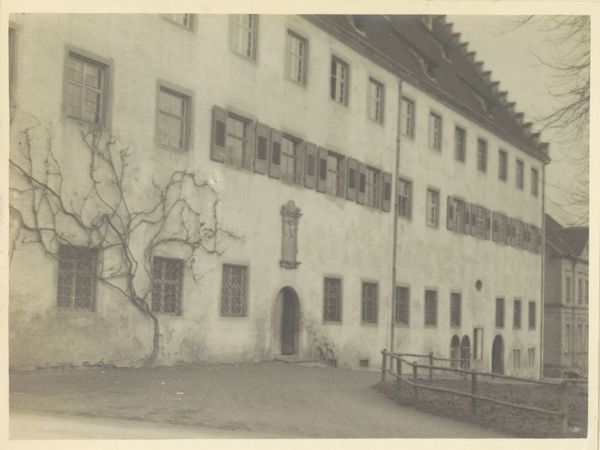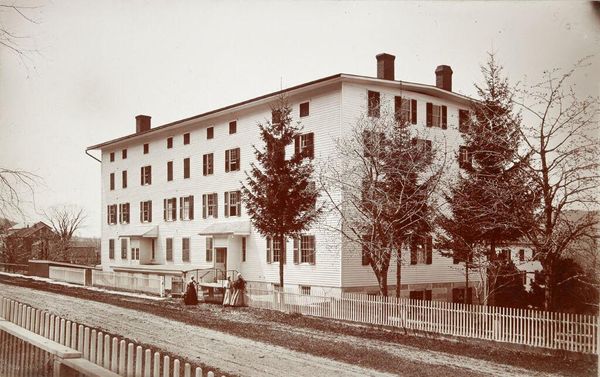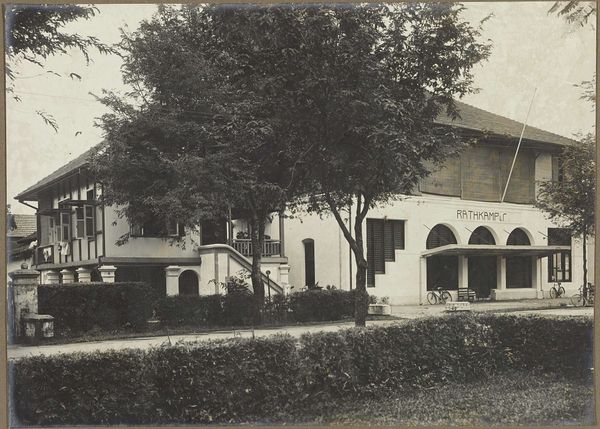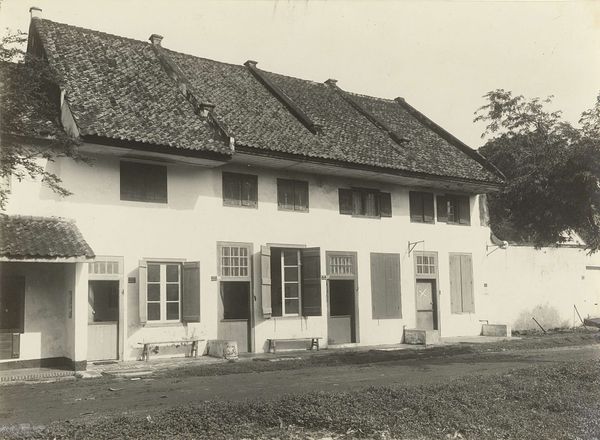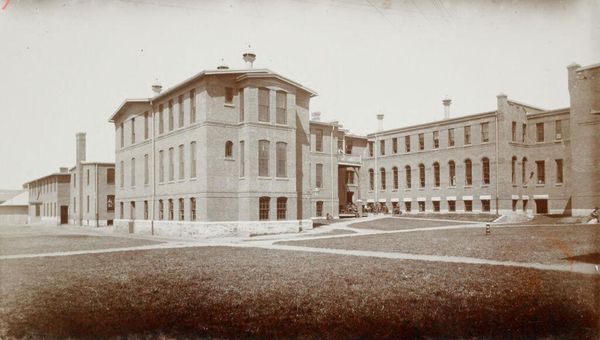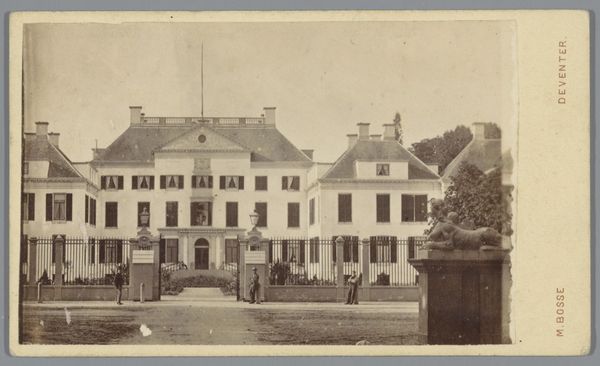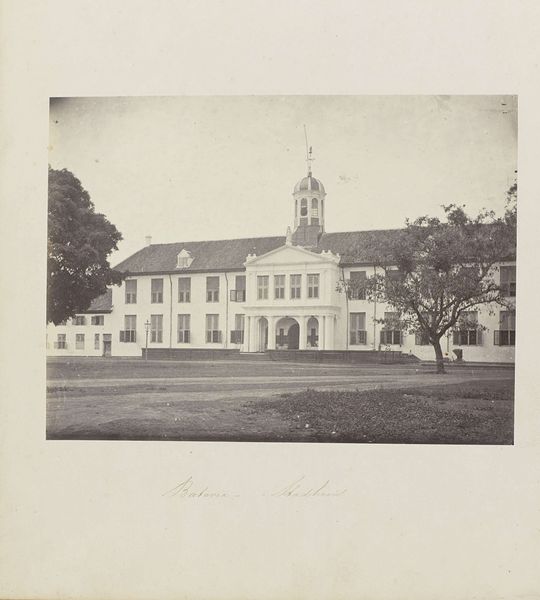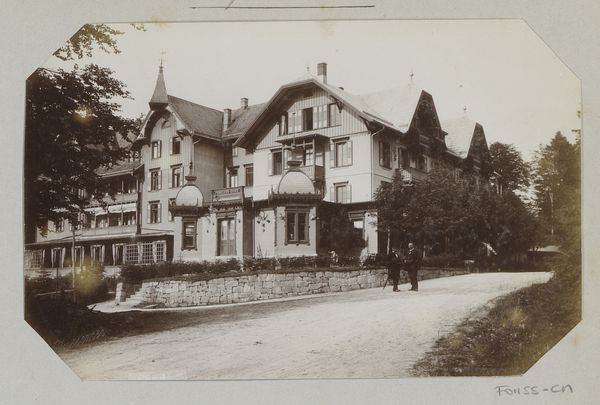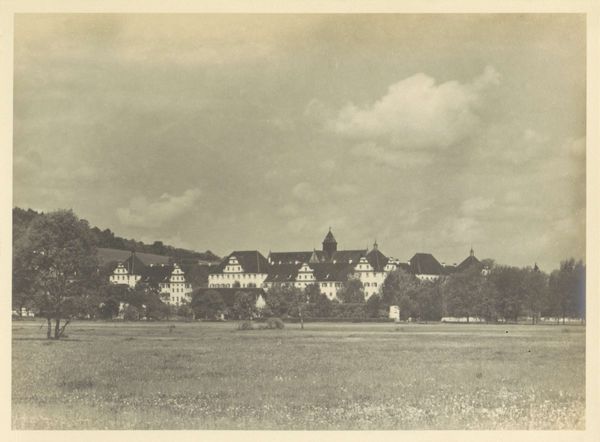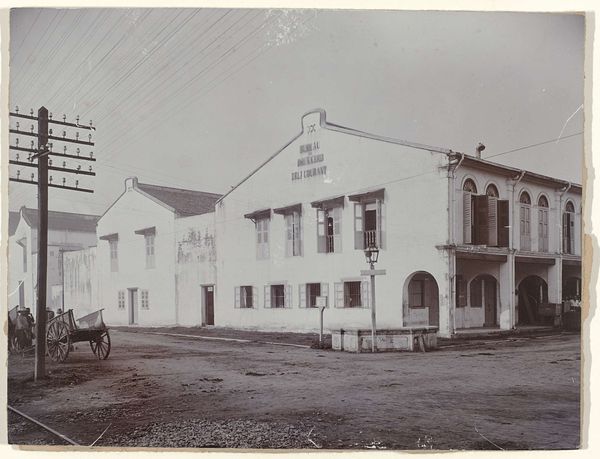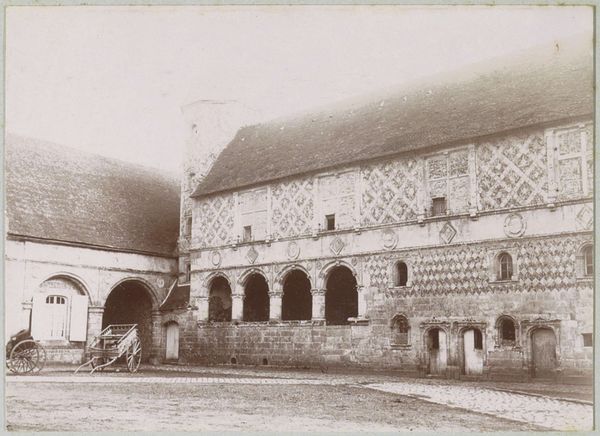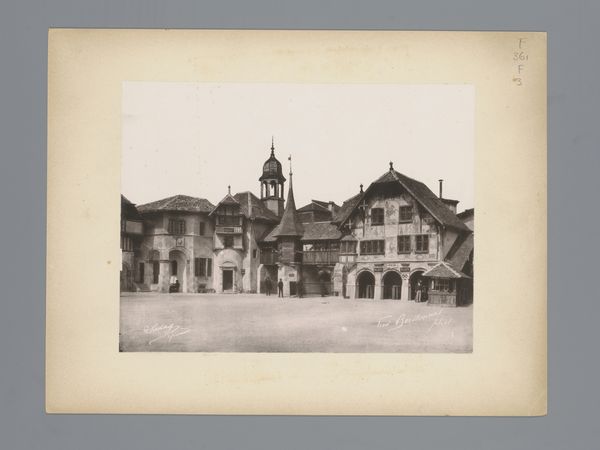
photography, architecture
#
dutch-golden-age
#
landscape
#
outdoor photograph
#
historic architecture
#
photography
#
historical photography
#
orientalism
#
architecture
#
historical building
Dimensions: height 23 cm, width 28.7 cm
Copyright: Rijks Museum: Open Domain
Editor: This photograph, titled "Nederlandse gebouwen in Batavia," was taken around 1900. It appears to be a historical photo showcasing Dutch architecture, but there’s also something distinctly tropical about it with the palms. What strikes me is the sort of silent, imposing colonial presence the architecture suggests. What do you see in this image? Curator: That's a keen observation about the architecture and its impact. For me, this image speaks volumes about the Dutch colonial project in Batavia, now Jakarta. We’re not just seeing buildings, but a visual representation of power and cultural imposition. Notice how the Dutch Golden Age architectural style clashes, yet coexists, with the local landscape. Editor: The "clash" is exactly what feels unsettling. Was that tension intentional, or just a consequence of colonization? Curator: It's both. The architecture intentionally asserted Dutch dominance, visually marking the territory as "theirs". At the same time, the reality of the tropical environment subtly challenged that dominance. Consider, whose perspective is privileged in this photograph? Is it of someone looking in, or someone existing in this new blended landscape? Editor: I see your point. The picture presents a very European viewpoint, looking out "possessively" from these buildings, perhaps. Curator: Precisely. This photo acts as a document showcasing power structures, a sort of "visual trophy." But we must ask: what narratives are silenced by this image? Whose stories are absent from this carefully constructed depiction of colonial life? It's an example of how photography can both record and actively shape our understanding of history and perpetuate existing inequalities. Editor: I never considered it in those terms. I now see the photograph is not just a record of architecture but a complex statement about power, perspective and untold stories. Curator: Exactly. Analyzing art this way helps us unpack those layers and confront difficult historical realities.
Comments
No comments
Be the first to comment and join the conversation on the ultimate creative platform.
